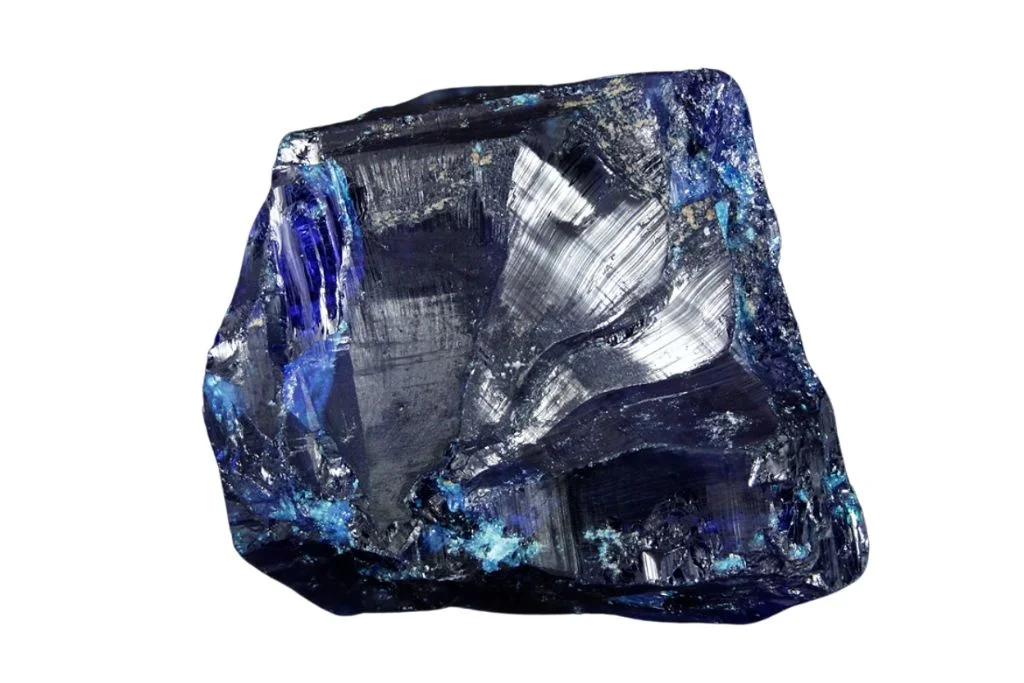Color and Appearance
Boleite is a strikingly beautiful mineral known for its deep blue color. The intensity of its hue can range from a rich royal blue to a darker navy shade, making it a visually captivating specimen. This vibrant coloration is one of the most distinctive features of boleite, setting it apart from many other minerals.
Crystal Structure
Boleite typically forms in cubic crystals, which contribute to its unique appearance. These crystals can vary in size, but they often form perfect cubes with sharp, well-defined edges and corners. The cubic structure is particularly noteworthy, as it creates a geometric aesthetic that is both visually appealing and scientifically interesting.
Transparency and Luster
While boleite crystals are generally opaque, they possess a brilliant adamantine to vitreous luster. This means that the surface of the mineral reflects light in a way that resembles the shine of a diamond or glass. The combination of its deep blue color and high luster gives boleite a jewel-like quality, enhancing its overall attractiveness.
Unique Features
One of the most remarkable aspects of boleite is its ability to form pseudocubic crystals. These crystals appear cubic at first glance but are actually composed of three intergrown tetragonal crystals. This unique formation adds an extra layer of intrigue to the mineral’s already fascinating structure. Additionally, boleite sometimes occurs in association with other minerals, creating striking color contrasts and complex crystal formations.
Size and Occurrence
Boleite crystals can range from tiny specimens to larger, more impressive formations. While small crystals are more common, larger specimens can reach several centimeters in size. The mineral is relatively rare, primarily found in a few locations worldwide, which adds to its allure among mineral collectors and enthusiasts.
Historical and Cultural Significance of Boleite
Boleite, a rare silver halide mineral, was first discovered in 1891 near Santa Rosalia, Baja California Sur, Mexico. Named after its type locality, Boleo, this striking blue cubic crystal has since captured the attention of mineral collectors and metaphysical enthusiasts alike. While not widely known in ancient cultures, Boleite has gained recognition in modern times for its unique properties and aesthetic appeal.
Metaphysical Associations
In the realm of crystal healing and metaphysics, Boleite is believed to possess powerful energetic properties. It is often associated with enhanced communication, particularly in expressing one’s truth and inner wisdom. Many practitioners claim that Boleite can help align the throat and third eye chakras, facilitating clear articulation of thoughts and intuitive insights. Additionally, this mineral is thought to promote emotional balance and inner peace, making it a valuable tool for meditation and spiritual practices.
Common Uses and Benefits
Despite its rarity, Boleite has found various applications in both traditional and modern contexts. Mineral collectors prize Boleite specimens for their striking blue color and perfect cubic structure, making them valuable additions to collections. In alternative healing practices, Boleite is often used in crystal grids or worn as jewelry to harness its perceived metaphysical benefits. Some believe that keeping Boleite nearby can enhance creativity, boost confidence in public speaking, and foster a sense of calm during challenging times. While scientific evidence for these claims is lacking, many individuals report positive experiences when working with this mineral.
Modern Applications
In recent years, Boleite has gained popularity in the creation of unique jewelry pieces and decorative objects. Its vibrant blue color and geometric form make it an attractive choice for designers seeking to incorporate natural elements into their work. Moreover, some entrepreneurs have begun incorporating Boleite into wellness products, such as crystal-infused water bottles and meditation aids, capitalizing on its reputed metaphysical properties. While these modern applications may not have historical precedent, they demonstrate the ongoing fascination with this rare and beautiful mineral.

